Toyota develops its vehicles and technology under the umbrella of an ‘Integrated Safety Management Concept’, one part of a three-pronged approach which involves continual improvement in vehicle safety as well as initiatives to improve driver and pedestrian awareness and to create a safe traffic environment.
Toyota’s eventual aim is to realise a society where traffic accidents are a thing of the past, which is why decades of research into safety technologies have resulted in Toyota cars receiving consistently high results in Euro NCAP crash safety tests, with the Prius, Yaris, Auris, Verso, Avensis and RAV4 achieving the maximum five-star award.
Toyota’s THUMS computer-modelling system has greatly helped the progress made in occupant and pedestrian safety. In this post, we take a look at some of the passive safety technologies that protect occupants in the event of a collision:
Impact-Absorbing Body and High-Strength Cabin
Seatbelts with Pretensioners and Force Limiters
Whiplash Injury Lessening (WIL) concept seats
Active Headrests
SRS Airbags
ISOFIX child seat mounting points
Impact-Absorbing Body and High-Strength Cabin
The safety of occupants in a collision begins with the construction of the vehicle itself. Since 1968, Toyota has designed and built its vehicles to have impact-absorbing body structures that will crush in the event of an accident, soaking up as much energy from the collision as possible.
In 1987, Toyota further improved occupant safety with the introduction of a high-strength safety cabin that dissipates energy throughout the entire body and minimises damage to the passenger compartment.
Seatbelts with Pretensioners and Force Limiters
Toyota introduced the three-point seatbelt in 1967, and the humble but vital restraint device has been saving lives ever since with little significant change to its design.
Seatbelts are immensely strong – capable of withstanding a weight of two tons – and are designed to control the movement of occupants within the cabin, particularly by limiting any impact to the chest during an accident. Yet they are also comfortable to wear in everyday driving, essential in encouraging occupants to use them on every trip.
In 1991, Toyota added pretensioners to seatbelts, a mechanism that instantaneously retracts the seatbelts when a strong frontal impact is sensed. This, in effect, quickly clinches the seatbelt to remove any slack in the belt and tightly grip the occupant before the full force of the impact is felt by the body.
Force limiters were introduced in 1997 and work in harmony with the pretensioners to protect the occupant while minimising the impact of the seatbelt itself to the occupant’s chest. Force limiters maintain an adequate amount of tension on the seatbelt to restrain the occupant without the force of the restraint causing injury.
Seatbelts with pretensioners and force limiters are fitted to all Toyota passenger vehicles in the current range.
Whiplash Injury Lessening (WIL) concept seats
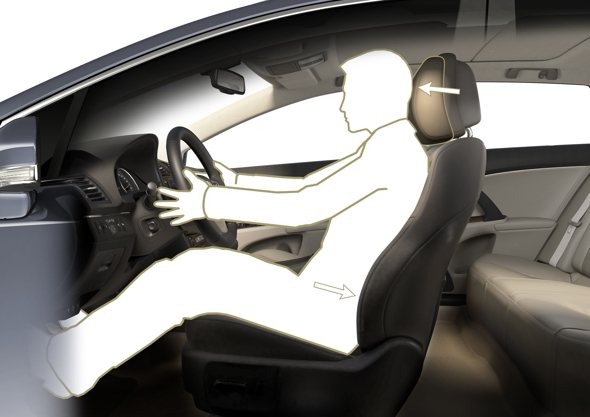
Just over half of injuries sustained in accidents in Japan were as the result of rear-end collisions, but approximately 90% of those injuries were neck injuries. That’s why Toyota developed the Whiplash Injury Lessening (WIL) concept seat, which first debuted in 1997 and was updated further in 2005.
The WIL concept seats are designed to cushion and support the occupant’s head and chest simultaneously, minimising the injury occurring from the head and torso moving in different directions. Toyota used its THUMS virtual-human computer modelling to confirm the effectiveness of the WIL concept seats in reducing whiplash injuries in lower speed rear impacts.
WIL seats are fitted as standard to most Toyota models, including Yaris, Auris, Prius, RAV4 and Land Cruiser.
Active Headrests
Active Headrests, introduced in 2007, are an extension to the WIL concept seats that further minimise neck injuries in rear-end impacts. A sensor in the seat is triggered by the lower back pressing into the seatback and activates the active headrest, which moves diagonally upwards and forward to catch the back of the head.
This technology decreases the severity of whiplash injury by a further 10-20% compared with the WIL concept seat on its own.
Active Headrests are featured on selected models in the Prius family, as well as Verso, GT86 and Land Cruiser.
SRS Airbags
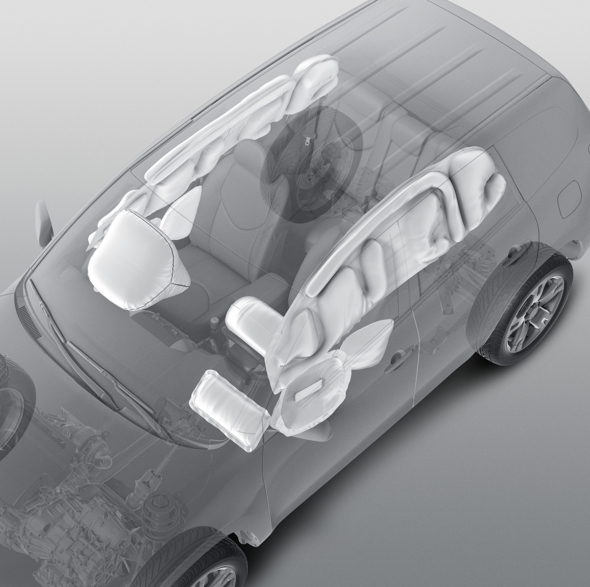
The first SRS (Supplemental Restraint System) airbag was fitted to a Toyota in 1989, providing protection solely for the driver. Since then, Toyota’s SRS airbag systems have been expanded throughout the passenger cabin to the extent that some Toyota models have nine or more airbags that create a protective cocoon around their occupants.
SRS airbags are triggered in the event of serious collisions, inflating rapidly to produce cushion the occupant and reduce the risk of severe or fatal injury. Dependent on the model, SRS airbags include front airbags for head and chest protection, knee airbags, side airbags, curtain shield airbags, seat cushion airbags and even the revolutionary rear window curtain shield airbag specially developed for the tiny Toyota iQ.
ISOFIX child seat mounting points
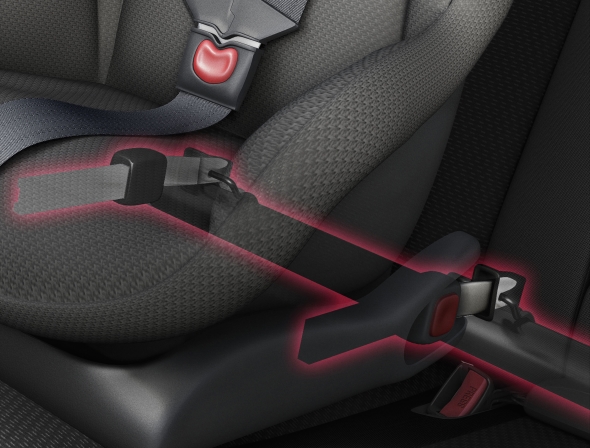
ISOFIX is an internationally recognised standard that sets out the specification for secure anchoring of child safety seats in cars, consisting of two anchor points at the base of the rear seats and a top tether point. ISOFIX greatly reduces the risk of improperly fitted child seats, thereby increasing the safety and effectiveness of the child seat.
Occupant safety is a priority for Toyota, so all Toyota passenger vehicles are equipped with ISOFIX child seat mounting points.
To learn more about other Toyota safety technologies, see these related posts:
Braking technologies
Stability and control technologies
Monitoring systems
Safety through convenience
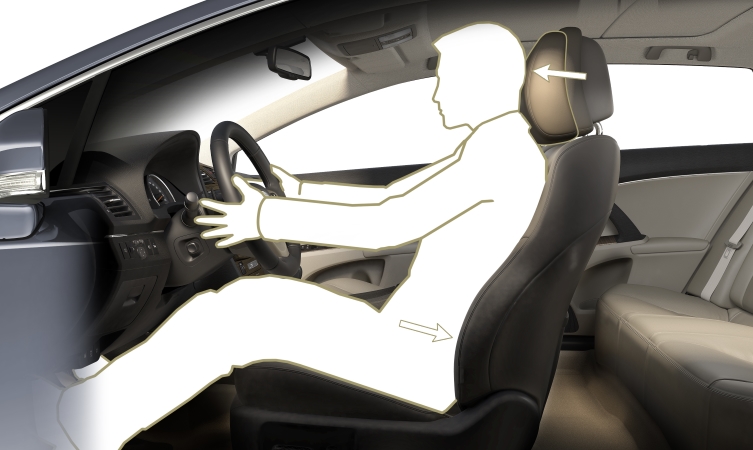


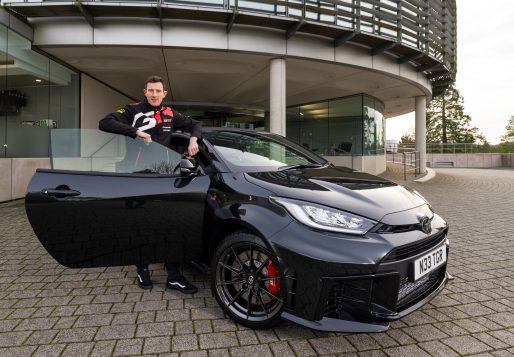
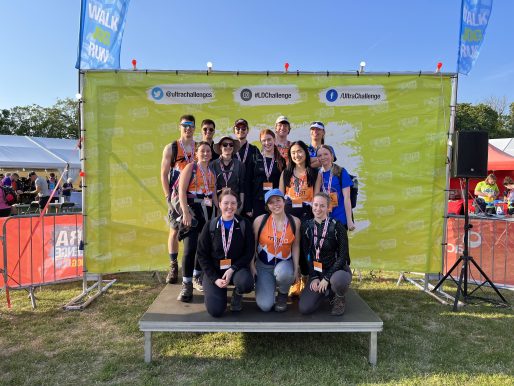
Hello could you tell me if you can add an isofix bracket bar to a 03 Toyota Celica. It doesn’t seem to have one.
Hi Rachel,
Thanks for getting in touch. Unfortunately, due to the safety risk involved with improper non-factory fitting of ISOFIX bracket bars, we are unable to recommend that you add your own bracket bar. Saying that, there are car seats available for that vehicle that do not require ISOFIX points. We only sell official accessories for cars that are currently on sale. However, your local motoring and car maintenance retailer, like Halfords, will be able to suggest a seat for your vehicle. Sorry we can’t be of more help on this occasion.
Hi could you tell me if the 03 Yaris has isofix please
Hi Dawn,
Thank you for your comment. We can confirm that all grades of the 03 Yaris have ISOFIX points as standard. Hope this helps.
I have 04 Yaris which does have isofix, on my back seats there is a little tab/label that says isofix on it, you can also feel the bars down the back of the seat if you have a look!
Hi,
I was wondering, could you tell me if a ’03 avensis strata has Isofix please?
Thanks
Hi Sharon,
Thank you for your comment. We can confirm that the 03 Avensis has ISO-FIX across all grades. Hope this helps.
Great thanks a mil
Hi Anita,
Thanks for getting in touch. We can confirm that the 2006 Yaris does have ISOFIX points. Hope this helps.
Good day. I’d like to know if Toyota Verso has airbags or some other kind of protection of passengers on the third row.
Hi Irina,
Thanks for getting in touch, sorry for the delay. We can confirm there are curtain shield airbags that are applicable to the third row passengers. Many thanks.
Hi
Could you confirm that Auris 2010 hybrid has isofix fitting?
Best
Nasos
Hi Nasos,
Thanks for getting in touch. We can confirm that the Auris 2010 Hybrid does have an isofix fitting. Many thanks.
Hi could you tell me what type of isofix I need for a 64 prius.
Thanks
Hi Sue,
Thanks for getting in touch. The ISOFIX in a Prius is an industry standard one. Hope this helps.
Hi could you tell me is there a reason why a car seat cannot be fitted in the front seat of a Prius if the air bag is turned off please.
Hi Sue,
Thanks for getting in touch. We’d advise contacting our Customer Relations team, you can contact them here: 0344 701 6202 by phone or email them at this address enquiries@toyota.co.uk.
Many thanks.
Hi
Does a 2005 Corolla have isofix please?
Hi Owen,
Thank you for your comment. We can confirm that the 2005 Corolla does have an isofix. Hope this helps.
Hi
Does the 2005 Toyota Avensis have isofix?
Hi Jimmy,
Thanks for getting in touch. We can confirm that the 2005 Avensis does has isofix. Hope this helps.
Thank you.
Hi
Does the 2004 Toyota Avensis have isofix?
Hi Jimmy,
Thanks for getting in touch. We can confirm that the 2004 Avensis does have isofix. Hope this helps.
Hi, with a 2004 Toyota Vitz where do you turn off the rear airbags? The car booster seat I have bought says I need to do this. I bought the car second hand and I have never had a manual. Thanks
Hi there,
Thanks for getting in touch. We’d advise talking to our Customer Relations team and they would be in the best position to assist. You can find their contact details here: https://www.toyota.co.uk/contact-us/index.json. Many thanks.